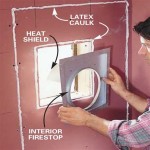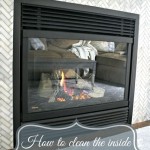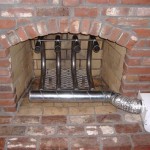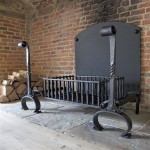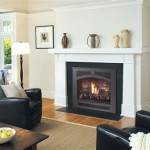Outdoor Stacked Stone Fireplace Ideas For Home Office
The integration of an outdoor fireplace into a home office design presents a unique opportunity to blend the boundaries between work and relaxation. The combination of the functional space of a home office with the aesthetic appeal and warmth of an outdoor fireplace can foster creativity, reduce stress, and create an inviting atmosphere for both work and leisure. Choosing stacked stone as the primary material for an outdoor fireplace adds texture, visual interest, and a natural element that complements various architectural styles.
Stacked stone fireplaces offer numerous advantages. The inherent durability of natural stone ensures longevity and resistance to the elements, making it a suitable choice for outdoor installations. Its aesthetic versatility allows for customization to match existing landscaping and architectural features. The visual texture of stacked stone adds depth and character, creating a focal point that enhances the overall ambiance of the outdoor home office. Furthermore, the thermal mass of stone helps retain heat, contributing to a more comfortable outdoor environment even during cooler months. This article explores various stacked stone fireplace ideas specifically tailored for enhancing a home office setting.
Design Considerations for Outdoor Home Office Fireplaces
Before embarking on the construction of an outdoor stacked stone fireplace for a home office, careful consideration must be given to several design aspects. The size of the fireplace should be proportionate to the size of the outdoor space. A massive fireplace in a small area can feel overwhelming, while a small fireplace in a large area may lack visual impact. The architectural style of the home and the existing landscaping should also inform the design choices. A rustic stacked stone fireplace may complement a traditional-style home, whereas a sleek, modern stacked stone design may be more appropriate for a contemporary residence.
The placement of the fireplace is equally important. Consider prevailing wind directions to minimize smoke exposure. The fireplace should be positioned to maximize its visual appeal from the home office and other outdoor seating areas. Ensure adequate clearances from combustible materials, such as siding, roofing, and foliage. Local building codes and regulations must be strictly adhered to, including requirements for setbacks, permits, and fire safety features. Professional consultation with a qualified contractor and a structural engineer is recommended to ensure compliance and safety.
The functionality of the fireplace should align with the intended use of the outdoor home office. If the area will primarily be used for work during the day, the fireplace may serve primarily as an aesthetic feature. However, if the space will be used for relaxation or entertaining in the evenings, the fireplace should provide sufficient heat and illumination. Consider incorporating features such as built-in seating, storage for firewood, and integrated lighting to enhance the usability of the space. The choice of fuel – wood, gas, or propane – will also impact the design and functionality of the fireplace. Wood-burning fireplaces offer a traditional ambiance, but require more maintenance and produce more smoke. Gas and propane fireplaces are more convenient and cleaner-burning, but require a gas line or propane tank connection.
Stacked Stone Fireplace Style Options
Stacked stone fireplaces offer a diverse range of aesthetic styles to complement various home office designs. These styles are largely determined by the type of stone used, the way the stone is arranged, and the overall design of the fireplace surround. Some popular options include:
Rustic Stacked Stone:
This style features irregularly shaped stones of varying sizes and colors, creating a natural and rugged appearance. The stones are typically arranged with minimal shaping or cutting, showcasing the inherent textures and imperfections of the material. Rustic stacked stone fireplaces are often paired with natural wood mantels and accents, enhancing the overall organic feel.Modern Stacked Stone:
This style emphasizes clean lines, geometric shapes, and a minimalist aesthetic. The stones are typically cut into uniform sizes and shapes, such as rectangular or square blocks, and arranged in a precise and orderly manner. Gray, black, or white stones are often used to create a sleek and contemporary look. Modern stacked stone fireplaces may incorporate features such as stainless steel accents, floating mantels, and integrated lighting.Dry-Stacked Stone:
This technique involves arranging stones without mortar, creating a textured and visually interesting surface. The stones are carefully selected and fitted together to ensure stability and structural integrity. Dry-stacked stone fireplaces offer a unique and timeless aesthetic, evoking a sense of history and craftsmanship. The absence of mortar also allows for better drainage and reduces the risk of cracking or deterioration.Veneer Stacked Stone:
This option involves applying a thin layer of manufactured or natural stone veneer to a concrete or masonry fireplace structure. Veneer stacked stone offers a more affordable and lightweight alternative to full-thickness stone, while still providing the aesthetic appeal of natural stone. Veneer stone is available in a wide range of colors, textures, and styles, allowing for customization to match various design preferences.Ledgestone Stacked Stone:
Ledgestone is a type of natural stone that is characterized by its long, thin, and irregular shapes. When stacked, ledgestone creates a visually striking texture with horizontal lines and a sense of depth. Ledgestone stacked stone fireplaces are often used to create a rustic or contemporary feel, depending on the color and finish of the stone.
The choice of stacked stone style should be carefully considered in relation to the overall design of the home office and the surrounding landscape. A cohesive and well-integrated design will enhance the visual appeal of the space and create a more enjoyable and productive work environment.
Practical Considerations and Construction Details
The successful integration of a stacked stone fireplace into an outdoor home office requires careful attention to practical considerations and construction details. The foundation of the fireplace must be stable and properly sized to support the weight of the stone. A concrete slab or footing is typically required, and its dimensions should be determined by a structural engineer based on the specific design and soil conditions. Proper drainage is essential to prevent water damage and erosion around the fireplace foundation.
The construction of the fireplace structure can be accomplished using a variety of materials, including concrete blocks, brick, or a steel frame. The choice of material will depend on the design of the fireplace, the availability of materials, and the budget. It is crucial to ensure that the structure is built according to local building codes and regulations, and that it is properly insulated to prevent heat loss and fire hazards.
The installation of the stacked stone veneer requires careful attention to detail. The stones should be carefully selected and arranged to create a visually appealing and structurally sound surface. Mortar should be applied evenly and consistently, and the joints between the stones should be properly filled to prevent water intrusion. The surface of the stone should be cleaned regularly to remove dirt and debris, and any necessary repairs should be made promptly to prevent further damage.
For gas or propane fireplaces, a qualified gas installer must connect the fuel line and ensure that the appliance is properly vented. The venting system must comply with local building codes and regulations, and it must be inspected regularly to ensure proper operation. Fire safety features, such as a spark arrestor or a fire screen, should be installed to prevent embers from escaping the fireplace. A fire extinguisher should also be readily accessible in case of emergency.
The electrical wiring for any integrated lighting or other electrical components must be installed by a licensed electrician. All electrical connections must be properly grounded and protected from the elements. Outdoor-rated fixtures and wiring should be used to ensure safety and durability. Regular maintenance and inspection of the fireplace and its components are essential to ensure continued safe and efficient operation. This includes cleaning the firebox, inspecting the venting system, and checking for any signs of damage or deterioration.
By carefully considering these practical considerations and construction details, homeowners can create a beautiful and functional stacked stone fireplace that enhances the ambiance and usability of their outdoor home office for years to come.

12 Stacked Stone Fireplace Ideas For Optimal Coziness Angi

Outdoor Fireplace Builder Richmond Va Dreams

How To Install A Stacked Stone Fireplace Top Source Slate

30 Stunning Stone Fireplace Ideas For Your Home

Styling The Fireplace Mantle For Spring North Country Nest

30 Stunning Stone Fireplace Ideas For Your Home

3 Reasons Why A Stacked Stone Fireplace Is The Perfect Choice For Your Home Top Source Slate

B S Diy Stacked Stone Fireplace Surround Genstone

17 Modern Stacked Stone Fireplace Ideas For Your Home

4 Natural Stacked Stone Fireplaces For Your Dream Design
Related Posts


